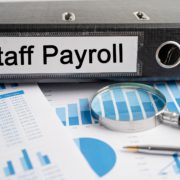SECURE Act 2.0: Changes Implemented for Employee Benefit Plans
The Setting Every Community Up for Retirement Enhancement (SECURE) Act 2.0 introduced significant reforms aimed at improving retirement savings opportunities for employees. The legislation enhances accessibility, encourages greater participation, and provides additional benefits for both employees and employers. Key changes include increased catch-up contributions, a higher age requirement for required minimum distributions (RMDs), expanded eligibility for part-time employees, and new employer matching options, including student loan payment matching.
Below is a breakdown of the most impactful updates and what they mean for retirement planning.
For Plans Established After December 29, 2022
For retirement plans established after December 29, 2022, automatic enrollment is now required for both 401(k) and 403(b) plans. This provision aims to increase participation rates and ensure employees start saving earlier. Other things to know include:
- Enrollment begins at a minimum of 3% and can be as high as 10%. After the first year, the contribution rate will automatically increase by 1% each year, up to a maximum of 15%.
- Participants can opt-out within 90 days if they choose not to participate.
- Small businesses with 10 or fewer employees and startups in business for less than three years are exempt from this requirement.
The automatic enrollment rule is effective starting December 31, 2024 and applies only to new plans. Plans that existed before December 29, 2022, are grandfathered in and do not need to implement automatic enrollment.
Required Minimum Distribution (RMD) Age Changes
One of the most notable updates is the gradual increase in the RMD age, allowing individuals more time to grow their retirement savings before mandatory withdrawals begin.
- For tax years 2023-2032, the RMD age is increased to 73 (up from 72).
- Starting in 2033 and beyond, the RMD age will rise to 75.
Expanded Catch-Up Contributions
The SECURE Act 2.0 enhances catch-up contribution limits, allowing older employees to save even more in their later working years.
- Beginning in 2024, individuals aged 60-63 can contribute up to the greater of $10,000 or 50% more than the regular catch-up amount.
- Once individuals reach 64, the catch-up contribution reverts to the standard amount.
- This provision applies only to qualified plans, including 401(k), 403(b), and 457(b) plans.
- For employees earning over $145,000, catch-up contributions must be made on a Roth (after-tax) basis if their employer allows Roth contributions. If the employer does not allow Roth contributions, these employees cannot utilize the additional catch-up provision.
Reduced Penalty for Missing RMDs
Failing to take an RMD previously came with a hefty 50% penalty on the amount not withdrawn. Under SECURE Act 2.0, the penalty associated with not taking an RMD is cut from 50% to 25%. Additionally, if corrected within two years, it’s then lowered to 10%. This change provides more flexibility for retirees and reduces the financial burden of an honest mistake.
New Employer Matching Options
Employers now have more flexibility in how they match employee contributions, particularly when it comes to Roth contributions. Employers can now offer matching contributions on a Roth basis. The matching contributions must be nonforfeitable, meaning employees immediately own the funds. A 1099-R form is required for reporting Roth employer matches.
Student Loan Payment Matching
Employers can now match a portion of an employee’s student loan payment and contribute it directly to their retirement account. This change aims to address the challenge of student debt while promoting long-term financial stability.
The SECURE Act 2.0 introduces sweeping changes that impact employees, retirees, and employers alike. By expanding access to retirement plans, increasing savings opportunities, and offering new employer-sponsored benefits, this legislation makes it easier for individuals to build a secure financial future. Whether you’re an employer looking to adjust your benefit offerings or an employee planning for retirement, understanding these changes is essential to making informed financial decisions.










